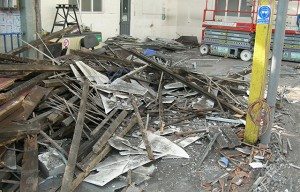Asbestos is the name given to a group of naturally occurring fibrous minerals widely used in manufacturing various building and heat-resistant materials.
It has, however, been described as a significant health risk. Respiratory diseases associated with exposure are asbestosis, lung cancer, and mesothelioma. Thus, to avoid such risks, it is mandatory to incorporate asbestos surveys as important elements of the security measures for the buildings. Asbestos condition surveys point out the locations and status of ACMs to ensure management and/or removal can be effectively performed to safeguard human health.
Here are the benefits:
Identification of Asbestos-Containing Materials
is done to ensure one gets a correct confirmation of the ACMs present in a structure. Many constructions that were put up before the 1980s may have asbestos in insulation, flooring, roofing, or any structural material. In the following ways, a survey presents an overview that is crucial for structured risk management as it targets the identification of the exact locations and types of asbestos. If this information is not obtained, then asbestos remains unseen and could remain a health hazard to the people occupying the premises.
Health Risk Mitigation
Regular surveys help minimize the various health issues caused byasbestos exposure. If ACMs are interfered with or destroyed, fibers can be released into the environment and cause health problems if inhaled. The World Health Organization estimates approximately one hundred and twenty thousand people die every year from diseases that are associated with asbestos. These exposures are prevented through asbestos surveys that enable ACMs to be adequately managed or eliminated, thus significantly reducing risk to occupants of the building.
Regulatory Compliance
It is also mandatory to carry out asbestos surveys for compliance reasons. Different nations have comprehensive measures and policies concerning the usage of asbestos. For example, in the United States, the AHERA – Asbestos Hazard Emergency Response Act requires schools to inspect for asbestos and have management plans. Likewise, the UK’s Control of Asbestos Regulations 2012 provides provisions about asbestos management in non-domestic premises. The non-adherence to these regulations attracts severe legal and financial repercussions, reducing asbestos surveys as a priority, not just a health issue but a legal one.
Economic Benefits
While there is a one-off expense in doing asbestos surveys, it is a way of having manifold returns economically. It is wise for companies to identify and correctly address asbestos because its presence is costly in terms of compensation for impaired health and the legal standpoint. Likewise, it can lead to the improvement of property prices and the marketability of buildings. From the business’s perspective, cost savings can result in containing various sickness-related charges, which in turn will afford the business a healthy environment in which workers will be more productive.
Conclusion
Asbestos surveys protect people’s health, fulfill the law’s requirements, and bring economic advantages. These surveys enable proper recognition and handling of asbestos-containing materials, which helps avert the severe health effects brought about by exposure to the material. Due to the high risks and existing major restrictions, proper and frequent asbestos review is crucial for property owners and managers. The muscle to fund these surveys is well spent on health and safety and for the company’s future prosperity.

























